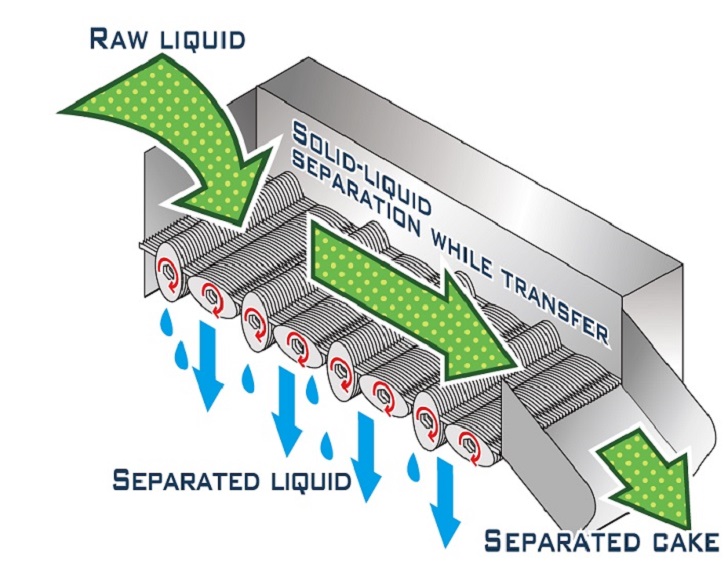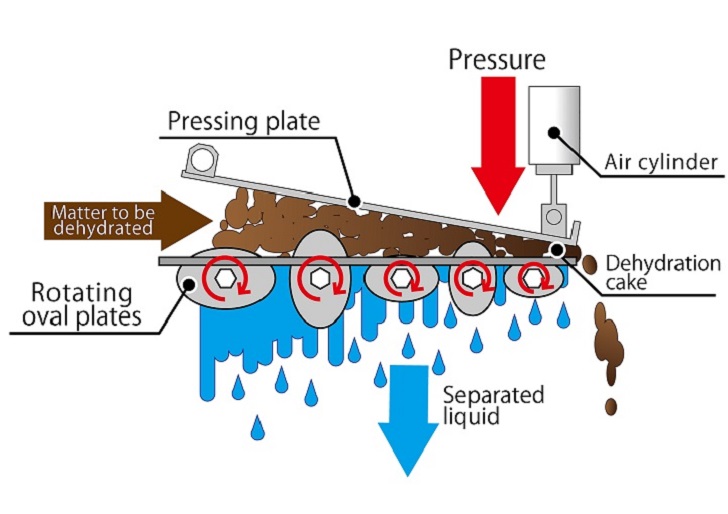

The disposal of solids from pork and livestock processors and food plants can draw on costly dewatering technologies. The KDS system aims to solve environmental and disposal issues for sludge and solids using a more hygienic and cost-effective process.
A compact and cost-efficient alternative to conventional dewatering technologies is being introduced to Australia and New Zealand to eliminate costs and occupational health & safety (OH&S) hazards associated with damper and heavier output from pork processing and major food preparation operations.
The KDS Multidisc Separator system from CST Wastewater Solutions, which requires no washwater, while capturing 90-99% of solids, is engineered to overcome the limitations of technologies such as screw presses, belt presses and centrifuges currently used.
Some of the applications for the KDS Multidisc Separator would be small-to-medium pork, meat and livestock, poultry, fish, and dairy plants as well as large-scale food and beverage kitchens and catering facilities. Today, these applications face the challenge not only of handling heavy, sticky wet waste, but also the volume and cost and OH&S hazards of transporting such unhygienic material to disposal facilities.
Important benefits CST Wastewater Solutions managing director Michael Bambridge says benefits of particular importance to installations for the pork industry include: • Removal of solids from waste streams • Dewatering of sludges and solids • Screening and dewatering of pork processing wastes • Removal and dewatering of solids from waste waters • Dewatering of chemical sludges from DAF floats • Treatment of pig farm raw manure and sludge • Cake dryness of 20-30%
The largest energy-saving KDS unit can handle about 100 kg DS (dry solids) an hour at 98% solids capture, to produce this more hygienic and more compact output that is easier and cheaper to handle and transport, he says.Used for dewatering of dissolved air flotation sludge, a very common application throughout waste water operations, the KDS achieves solids capture of 97% thickened sludge at a dryness of 17%. Waste activated sludge dryness levels are typically 15-18% dryness.
The high quality, Japanese-manufactured technology: • Uses minimal energy, consuming as little as 0.06 kW/hr of electricity • Operates at low (63 dBa) non-intrusive noise and vibration levels • Requires minimal daily maintenance, saving cost and enhancing OH&S performance • Occupies typically half the space or less of conventional dewatering plants • Is available as fixed compact units or skid-mounted types that can be carried on truck or trailer.
This lighter, dryer waste it produces reduces the need for manual labour in cleaning and transport operations and curtails the need for staff to handle sloppy heavy waste potentially hazardous to health. “With the KDS’ minimal water, power and space demands, it is suited to both smaller-to-medium business and also to those operating in remote or environmentally sensitive situations,” said Mr Bambridge.
Applications for which the separator is designed include: • Food processing waste, including poultry and snack foods, kitchen and restaurant waste, raw wastewater (primary screening) and sludge • Abattoir, feedlots, and dairy farm wastewater and sludge. Cattle manure cake dryness of 25-35% is typically achieved • Pig farm raw manure and sludge, with cake dryness of 20-30%. • Barrel polishing water, water-based paint wastewater, grease trap waste, dyeing wastewater, waste oil, and plastic recycling. • Seafood processing • Sewage treatment, including raw wastewater (primary screening) and sludge to landfill
How it works The clog-free automatic liquid-to-solid waste separator dewaters solids and conditioned sludge on a self-cleaning wedgewire belt. This static belt is cleaned by a unique set of rotating oval shape plates. After the drainage and thickening zone, the thickened sludge passes a dewatering zone which consists of an adjustable plate, actuated manually or by pneumatic cylinder to further squeeze the solids.
The KDS’ unique self-cleaning dewatering and conveying system features an oval plate separation and transfer structure that prevents clogging and permits automatic continuous operation that handles oily and fibrous material with ease. “This simple-to-maintain separator offers a high throughput within a small body, with the smallest model being just under 350 mm wide and weighing 50 kg.
The compact rotational oval plate structure achieves high transportation and separation efficiencies, while the simplicity of the machine’s overall structure offers low maintenance, achieving cost and OH&S benefits through less handling being required to clear hazardous materials.
“The KDS separator uses a fraction of the power of a centrifuge and requires no water usage during operation, unlike a belt press or a screw press. For a relatively low investment cost, it also offers a high performance alternative to sludge drying beds and geobags, for example,” says Mr Bambridge.





